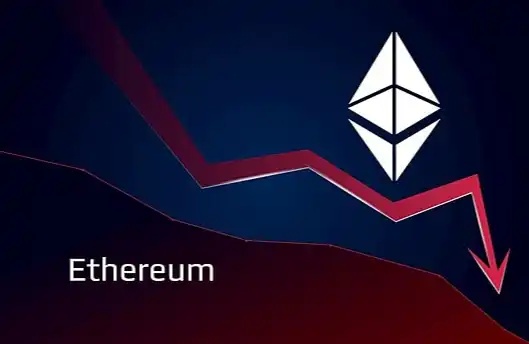Sharp Pullback After ATH - Is the Market Still in a Bullish Trend? | Trader's Insights
At the Jackson Hole Global Central Bank Symposium, Federal Reserve Chair Powell sent a clear dovish signal. The market quickly reacted: ETH briefly surpassed $5000, hitting a new all-time high, and the S&P 500 also ended its previous five-day decline, with a 1.5% daily rebound, nearing its all-time high.
However, this brief euphoria was soon overshadowed by new concerns. Uncertainties such as the U.S. "recession talk," PCE price index, and NVIDIA's financial report emerged one after another, making the lofty market sentiment once again sensitive. Risk appetite plummeted rapidly, and the trend quickly shifted to a correction phase. Currently, BTC has dropped below $110,000, and ETH experienced an 8% daily decline to $4400.

Next, Decrypt BlockBeats has summarized traders' views on the upcoming market situation, providing some directional references for your trading this week.
@0xENAS
I believe we are currently in the "last round" of this long cycle bull market that started in January 2023. Such phase-oriented rallies usually do not last long, probably only for a month or two. Today, almost all marginal buyers globally have entered the market, incremental funds in the crypto market have been fully absorbed, and both BTC and ETH have hit new all-time highs.
The mid-to-long-term target I set for ETH/BTC of 0.04 has been reached. For me, this means that the main opportunity for ETH trading is basically over.
This also determines my strategic shift—I will no longer engage in aggressive attack strategies with large positions. Going forward, my focus will shift from "capital accumulation" to "capital preservation." Perhaps I will miss out on the potential crazy rallies that may come next, but it's okay because that does not align with my trading system.
This does not mean I have liquidated my positions or gone short. On the contrary, I still maintain a long position, but the position size has been significantly reduced. I will continue to monitor DAT's mNAV as a core indicator. When this cycle ends, most DAT's mNAV will fall below 1.
@CryptoHayes
I believe the market in late this year will likely be higher than it is now. As long as you are not leveraged, there is no need to overly worry about short-term fluctuations—even if we see another 15%-20% drop this week, if you have cash on hand, this is actually a good opportunity to increase your position. I can almost guarantee that we will see "money printing" before the end of the year, with Bitcoin possibly surging to $250,000 and ETH possibly breaking $10,000. Once ETH breaks its all-time high, the upside potential will be wide open, and I even think that $10,000 to $20,000 for ETH is a reasonable range.
The core of this logic is: Digital asset treasuries continue to raise funds. As long as the asset prices they purchase keep hitting new highs, the fundraising process will be easier, funds will constantly drive up the price, creating a positive feedback loop. There are two key variables behind this—how much money these companies can raise and how much liquidity the government will release. I am not the type of person who rigidly follows the "Bitcoin four-year cycle." The length of this bull run will largely depend on how capital and policy play out.
Currently, the Trump administration has not fully entered the "money-printing mode" yet; they are more like testing the waters—putting out various ideas to see which ones can truly materialize while signaling, "We want to heat up the economy." When the dust settles on the selection of the Federal Reserve Chair and Board of Governors, such as whether Trump can replace Powell and appoint his own people, the pace will truly become clear, expected around mid-next year.
Once the personnel arrangement is completed, from the middle of 2026 until the end of Trump's term, will be the craziest loose phase. Because without printing money, it's not possible to win the election. The Democrats will print, and so will the Republicans; everyone will use liquidity to please their supporters and interest groups.
As for treasury companies, by then, some may be acquired at a discount because of valuation or they may directly liquidate their assets. Top projects will passively absorb capital and become winners; while laggards will be eliminated. However, this true "industry reshuffle" may take some time to arrive.
Related Reading: "Arthur Hayes Latest Interview: Autumn Pullback, ETH Long-Term Targeting $10-20K"
@rickawsb
Bitcoin and Ethereum saw a sharp pullback today, with various reasons speculated
Some say it's due to exchanges dumping, some say whales exiting, some say NVDA's earnings this week may disappoint, some say it's because of Trump's mention of his cards being able to "destroy" the Chinese economy, some say Moody's and some economists' new report stating the U.S. is on the edge of a recession
Other reasons are unlikely to have a long-term widespread impact, the recession argument can be briefly discussed, after all, there are quite a few complex economic signals.
Personally, I believe that traditional economists are likely once again overlooking the "non-traditional" and key factor reshaping the economic landscape—the AI revolution. If we must talk about recession pressure, a more appropriate description might be: the U.S. economy is currently in a unique period shaped by both cyclical pressures (as indicated by the LEI leading economic index) and structural new forces (as indicated by the AI revolution). The risk of a recession does exist and cannot be ignored, but the accelerated development of AI is the decisive factor in the economy. The current situation is more like a "shift period" in an economic structural transformation, rather than a simple cyclical recession.
According to research by major institutions, even under a pessimistic scenario, Generative AI may trigger a "large-scale labor productivity boom" in the next one to three years, potentially adding trillions of dollars to the global GDP. The massive investment in AI explains why economic hard data remains resilient despite numerous warning signals. Similarly, most views on a stock market crash have not taken the AI factor into account.
The conclusion is: Growing pains will occur, pullbacks in a bull market will occur, a recession will not occur, a bear market is not here yet, the bull is still here!
@Murphychen888
My definition of a bear market is: when major market participants completely lose confidence in the future. This can be observed through the behavior of large holders.
If we have to time-stamp this, in November 2021, large market participants (holding 100-10k BTC) frequently and continuously cashed out profits amounting to over $2 billion. Even now, despite BTC reaching a new all-time high of $120k, the largest profit-taking by large holders is still less than $1 billion. This is completely different from the second peak in 2021.
Regarding the chip structure, when the price hit $65,000 in 2021, a large number of cheap chips were concentrated in the $6,000-$10,000 range, enabling them to sell at a profit even if the price fell.

By 2025, a large number of chips are concentrated in the $90,000-$110,000 and $113,000-$118,000 range. If the price falls below this range, these chips will not only have no profit but will also face significant losses. These chips are held by institutions that entered through ETFs and Wall Street capital.

So, will the bearish divergence and death cross at the high end technically bring about a long-term bear market as seen after the double peak in 2021? Is it necessary to consider changes in chip structure, whale behavior, macro looseness, and other objective conditions? If it is described as entering a "phase of a weak market," I agree, but I do not agree with blindly following a mechanical timestamp, which may appear to be peddling anxiety.
@Vida_BWE
I just feel like the bull market progress bar is already 80% loaded. Those who aim for long-term investment and keep investing can stop now. Buying spot at this point is completely out of cost-performance ratio. Those who already have a full bag should switch to de-risking mode only.
Assuming a 6-month investment period
Plan A: Buy spot, the total market cap may continue to rise by 30%, but at the same time, you have to bear the risk of experiencing a 30%+ pullback once.
Plan B: Leveraged U arbitrage, can achieve 0% drawdown and still gain 20%.
For big players who "manage their own funds," the cost-performance ratio of growing the entire portfolio by 30% with 0% drawdown in a year is higher than growing by 50% with a maximum 20% drawdown.
As for big players like "strategy" and "sbet" who "manage others' money," it is the opposite. They are not afraid of losses since it's not their own money they lose, but rather the AUM they gain. Therefore, they are not very concerned about drawdowns or price movements; they simply buy without looking at the price.
@fundstrat
BMNR CEO Tom Lee, citing a Bloomberg analyst's view, said: It is predicted that ETH will bottom out in the next few hours, and the current price odds are quite favorable. If it falls below the recent low of $4,067 on August 18, it indicates a short-term bearish trend. Ideally, ETH will bottom around $4,300 in the next 12 hours and then rebound to break the previous high of $5,100, rallying to around $5,400.
Welcome to join the official BlockBeats community:
Telegram Subscription Group: https://t.me/theblockbeats
Telegram Discussion Group: https://t.me/BlockBeats_App
Official Twitter Account: https://twitter.com/BlockBeatsAsia
 Forum
Forum

 Finance
Finance
 Specials
Specials
 On-chain Eco
On-chain Eco
 Entry
Entry
 Podcasts
Podcasts
 Activities
Activities
 OPRR
OPRR









